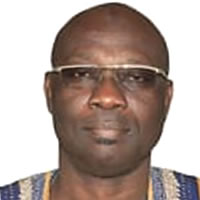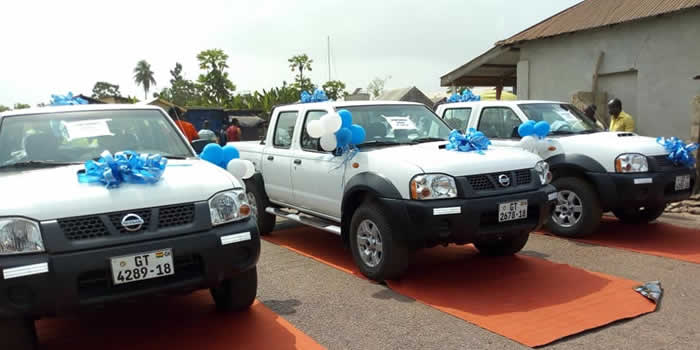

The cultural practice of the people of the Municipality is not different from the rest of the Akan speaking communities in the country.
The Municipality has one traditional council, that is, the Sefwi Wiawso Traditional Council, which is headed by the Paramount Chief of the Traditional Area (Omanhene), with the title ‘Kogyeabour’.
The Traditional Area also includes the whole of the political districts of Juaboso, Bodi, Akontombra, Bia East and West. The traditional council has a membership of 65 Chiefs. The inheritance system is matrilineal. The Omanhene and the people of the traditional area celebrate Yam Festival or (‘Aluelue’) which is celebrated in December. The sub-chiefs within the paramouncy then celebrate their festivals on convenient dates between December and February.
With regards to ethnicity, the Sefwi’s (Akan) form about 78.6 percent. Other minority groups include Mole-Dagbani, Krobos, Ewes and Nzemas form the remaining 21.4 percent. Christianity forms the majority of the religious group in the Municipality constituting 81.7 percent with others, Islamic, traditionalist and no religion forming the remaining 18.3 percent.
Tourist Attraction
The Municipality can boast of a number of tourist potentials, but unfortunately they are not well developed. It has a comparative advantage of eco-tourism, supported with festival activities. Some of these tourist attraction sites include the following;
The Tree of God (Nyame Dua)
The tree of God is located at Nyamebekyere, a distance of about 5km from Sefwi Wiawso. It is said that about 150 years ago, a farmer struck a machete into the stump of the tree and this is still visible in the trunk of the tree. The tree has continuously been growing ever since, and today the trunk of the tree is completely surrounded by the machete.
Abombirim sacred tortoise forest
It is a sacred forest preserve in which a giant tortoise lives. When one sees the tortoise and picks it, there turn to be total darkness in the forest. Until such a time that the tortoise is left for light to re-appear, one will not be able to find a way out of the forest. It is located at Sefwi Boako, a 21 km distance from Sefwi Wiawso.
Ancestral hole
The ancestral hole is at Sefwi Bosomoiso, about 4km from Sefwi Wiawso, the capital. It is believed that the royal family of Bosomoiso community originated from this hole. It is believed to be a bottomless hole surrounded by trees but no leaves fall into it. The hole is alleged to have healing powers (Western region: Human development report 2013 by UNDP).
Nationality
Nationality is defined as the country to which a person belongs. A distinction is made between Ghanaians and other nationals. Ghanaian nationals are grouped into Ghanaian by birth, Ghanaian with dual nationality and Ghanaian by naturalization. Other nationals are grouped into ECOWAS nationals, Africans other than ECOWAS nationals, and non-Africans.
Ethnicity
Ethnicity refers to the ethnic group that a person belonged to. This information is collected only from Ghanaians by birth and Ghanaians with dual nationality. The classification of ethnic groups in Ghana is that officially provided by the Bureau of Ghana Languages and which has been in use since the 1960 census.
Birthplace
The birthplace of a person refers to the locality of usual residence of the mother at the time of birth. If after delivery a mother stayed outside her locality of usual residence for six months or more or had the intention of staying in the new place for six or more months, then the actual town/village of physical birth becomes the birthplace of the child.
Duration of Residence
Duration of residence refers to the number of years a person has lived in a particular place. This question is only asked of persons not born in the place where enumeration took place. Breaks in duration of residence lasting less than 12 months are disregarded. The duration of residence of persons who made multiple movements of one (1) year or more is assumed to be the number of years lived in the locality (town or village) since the last movement.
Religion
Religion refers to the individual’s religious affiliation as reported by the respondent, irrespective of the religion of the household head or the head’s spouse or the name of the person. No attempt was made to find out if respondents actually practiced the faith they professed.
Marital Status
Marital status refers to the respondent’s marital status as at Census Night. The question on marital status was asked only of persons 12 years and older. The selection of the age limit of 12 years was based on the average age at menarche and also on the practice in some parts of the country where girls as young as 12 years old could be given in marriage.
Date Created : 11/21/2017 12:49:37 AM











 facebook
facebook
 twitter
twitter
 Youtube
Youtube
 +233 593 831 280
+233 593 831 280 0800 430 430
0800 430 430 GPS: GE-231-4383
GPS: GE-231-4383 info@ghanadistricts.com
info@ghanadistricts.com Box GP1044, Accra, Ghana
Box GP1044, Accra, Ghana